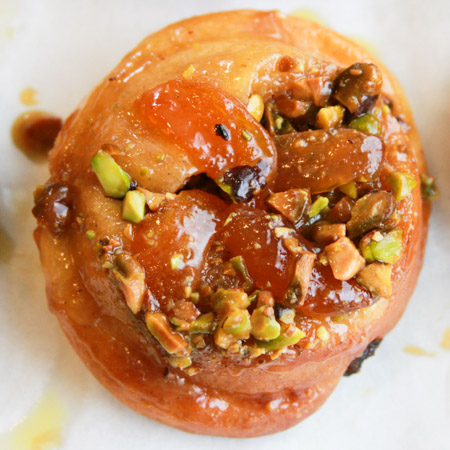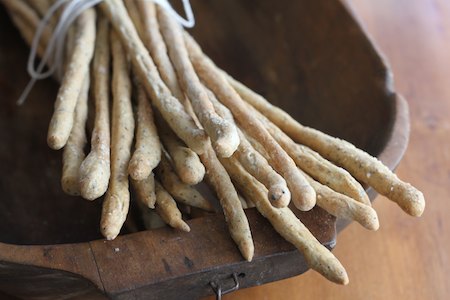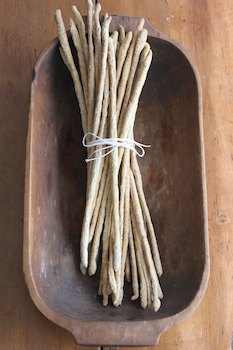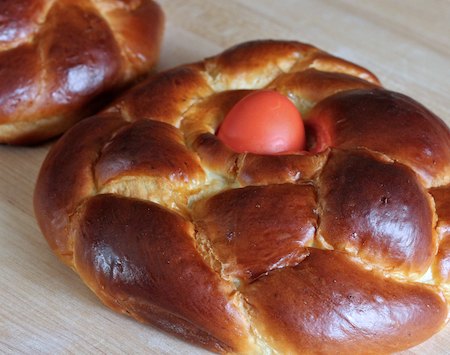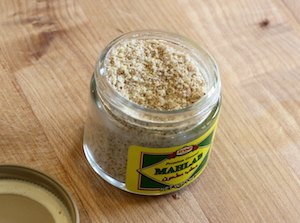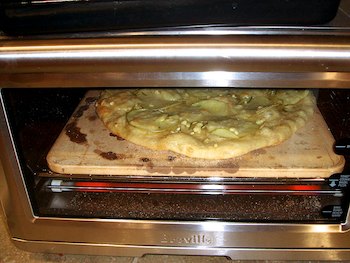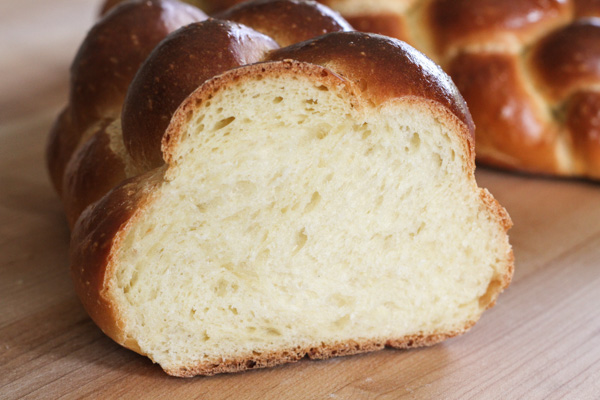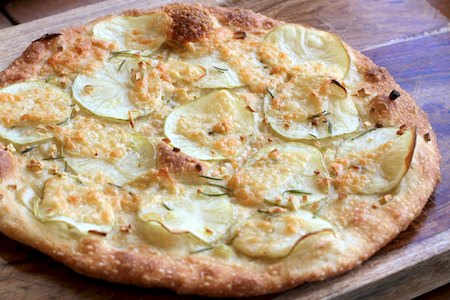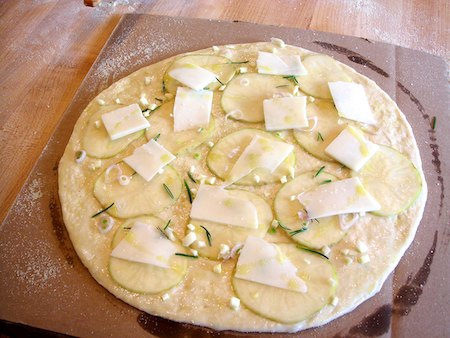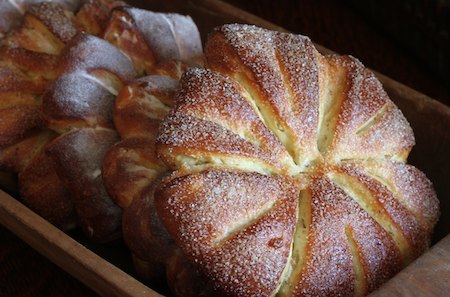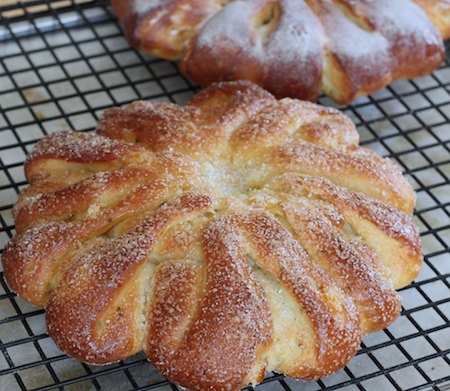
In these sticky buns, the traditional raisins and pecans are replaced with dried apricots and pistachios. Shelled pistachios can be a bit hard to find, but I came away from my last flour run to Costco with a big bag, roasted and salted. Of course, just about any nuts and dried fruit will work. Just remember to get a big package of napkins at Costco, too; they’re not called sticky buns for nothing!
